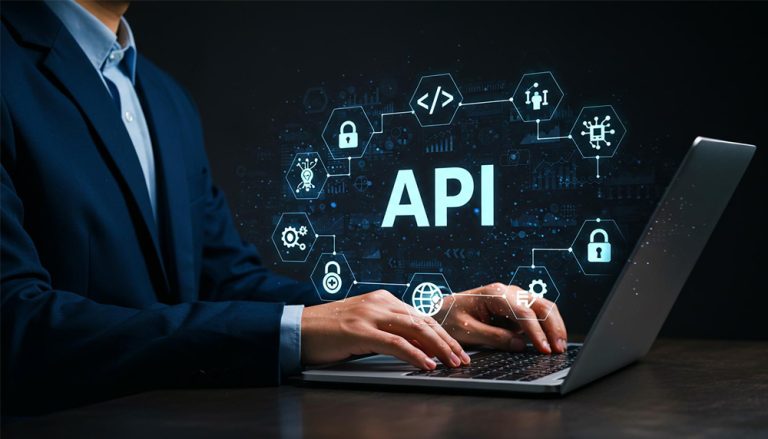
Last updated on June 10, 2024
Internet for Everything: Revolutionizing Connectivity
The Internet has dramatically evolved, becoming integral to our daily lives. The “Internet for Everything” (IoE) is the next step, connecting people, processes, data, and things. This interconnectedness is driving changes across industries, enhancing efficiencies and creating new opportunities. This blog will explore IoE, its components, applications, benefits, and challenges.
Understanding Internet for Everything
The Internet for Everything (IoE) expands on the Internet of Things (IoT). IoT focuses on connecting physical devices, while IoE integrates people, processes, and data. IoE creates a highly interconnected ecosystem where all components communicate and interact, resulting in smarter, more responsive, and efficient systems.
Components of IoE
- People: Devices and platforms facilitate human interactions, enabling seamless communication and collaboration.
- Processes: Processes and workflows are optimized and automated.
- Data: The vast data generated by devices and users is collected, analyzed, and used to inform decisions.
- Things: Internet-connected devices that can gather and share data.
Applications of IoE
The applications of IoE are vast and span multiple sectors. Here are a few key areas where IoE is making a significant impact:
Smart Homes
In smart homes, the Internet of Everything (IoE) integrates devices like thermostats, security systems, lighting, and appliances. These connected devices communicate to provide convenience, security, and energy efficiency. For instance, a smart thermostat can learn your preferences and adjust temperature automatically, while security cameras can alert you to suspicious activity in real-time.
Healthcare
IoE is transforming healthcare through remote monitoring, telemedicine, and personalized treatment. Wearable devices track vital signs and health data, sending it to providers for continuous monitoring. This enables timely interventions and better patient outcomes. IoE also facilitates efficient, patient-centric healthcare by enabling the seamless sharing of medical records.
Transportation
The transportation sector is using the Internet of Everything (IoE) to create intelligent transportation systems (ITS). Connected vehicles, traffic signals, and infrastructure work together to optimize traffic flow, reduce congestion, and enhance safety. IoE-enabled autonomous vehicles are poised to revolutionize transportation by reducing human error and improving fuel efficiency.
Manufacturing
IoE enhances manufacturing productivity and efficiency through predictive maintenance, real-time monitoring, and automation. Connected machines can detect issues before downtime, and supply chain visibility ensures timely material delivery. This leads to cost savings and improved production quality.
Agriculture
IoE is driving agricultural innovation through precision farming. Field sensors monitor soil, enabling farmers to act on insights. Drones survey crops, detect diseases, and optimize irrigation, increasing yields and sustainability..
Benefits of IoE
The adoption of IoE offers numerous benefits, including:
Enhanced Efficiency
IoE automates processes and enables real-time communication, reducing manual intervention, minimizing errors, and enhancing efficiency. This leads to cost savings and improved productivity across sectors.
Improved Decision-Making
IoE generates data that can be analyzed to gain valuable insights. These insights help organizations make informed decisions, optimize operations, and respond quickly to changing conditions.
Increased Convenience
IoE simplifies everyday tasks and enhances convenience. Smart home devices automate routines, and wearable health monitors track fitness goals, making life more manageable and enjoyable.
Better Resource Management
IoE optimizes resource management by improving energy efficiency, reducing waste, and enhancing supply chain. For instance, smart grids balance electricity demand and supply, and smart irrigation systems conserve water.
Challenges of IoE
Despite its numerous advantages, IoE also presents several challenges that need to be addressed:
Security and Privacy
The interconnected IoE increases cybersecurity risks. Robust security and user privacy protection are critical for IoE success.
Interoperability
Ensuring seamless interoperability is a significant challenge with many devices and platforms. Standardization and compatibility across systems are essential for effective IoE.
Data Management
The data generated by IoE devices poses storage, processing, and analysis challenges. Efficient data management strategies and advanced analytics tools are required to handle this data deluge.
Cost
Implementing IoE solutions can be costly, especially for small and medium-sized businesses. The expense of devices, infrastructure, and maintenance can hinder widespread adoption.
Conclusion
The Internet for Everything is transforming how we interact with the world. By connecting people, processes, data, and things, IoE drives innovation and creates new possibilities across sectors. While challenges exist, the benefits of IoE outweigh the drawbacks. As technology evolves, IoE integration will become more seamless, leading to a smarter, more connected world. Embracing IoE will enable us to harness the digital age’s full potential and pave the way for a brighter, more efficient future.






